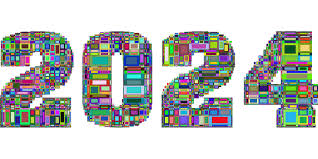The growing ecosystem of devices and products serving peoples’ health and well-being shows us that innovators already see the opportunity to serve the fast-growing market for self-care among people 50 years of age and up.
For nearly twenty years, one thing has felt inevitable: when boomers reach “old age,” senior living demand will surge. And yet ..
ChatGPT Health builds on consumer use of today's ChatGPT so responses are informed by your health information and context.
The prize honors .lumen’s Glasses for the Blind, an AI-based device that applies autonomous driving technology adapted for pedestrians. Using computer vision and local processing, the headset understands the three-dimensional environment in real time without relying on the internet or pre-defined maps and guides the user through subtle vibrations indicating a safe direction to follow.
The United States faces a fundamental mismatch between surging demand and insufficient capacity.

 Publicly available up-to-date stats about the older adult population is weak or non-existent. The most recent version of ChatGPT admits it cannot state the current population in the US that is aged 75+. Nor can Google. This is somewhat surprising, given the angst in business and market predictions about the aging of the US population and the potential doom that it portends. But anyway, the answer is buried in Census tables. Would you be surprised to learn that there are 25.7 million people aged 75+ today? That 14.8 million are women and 10.8 million are men? Would it surprise that 42% of the 65+ population (60.5 million) is aged 75+?
Publicly available up-to-date stats about the older adult population is weak or non-existent. The most recent version of ChatGPT admits it cannot state the current population in the US that is aged 75+. Nor can Google. This is somewhat surprising, given the angst in business and market predictions about the aging of the US population and the potential doom that it portends. But anyway, the answer is buried in Census tables. Would you be surprised to learn that there are 25.7 million people aged 75+ today? That 14.8 million are women and 10.8 million are men? Would it surprise that 42% of the 65+ population (60.5 million) is aged 75+? The more things change. January 2024 brought announcements, updates and a plethora of new tech, some a dream in the eye of a startup, some in the market and some likely to improve lives, if not right away than soon. In fact, the most intriguing aspect of the month of CES 2024 was how much like previous events it was – and yet it was the first post-Covid big event, and the first for many new to the tech industry. Also 2024 is shaping up to be a big year of change for the older adults-tech market – some actually think it is disappearing into the tech market for all. Maybe! Here are the six blog posts from January 2024:
The more things change. January 2024 brought announcements, updates and a plethora of new tech, some a dream in the eye of a startup, some in the market and some likely to improve lives, if not right away than soon. In fact, the most intriguing aspect of the month of CES 2024 was how much like previous events it was – and yet it was the first post-Covid big event, and the first for many new to the tech industry. Also 2024 is shaping up to be a big year of change for the older adults-tech market – some actually think it is disappearing into the tech market for all. Maybe! Here are the six blog posts from January 2024: Is the user experience deteriorating?
Is the user experience deteriorating?  T
T The press releases signal a busy time in Las Vegas. Viewed from afar, drowning in press releases, it is clearly a nearly fully revived
The press releases signal a busy time in Las Vegas. Viewed from afar, drowning in press releases, it is clearly a nearly fully revived 
 The 2024 survey is out – some might say it is positive about tech adoption. Older adults (age 50+)
The 2024 survey is out – some might say it is positive about tech adoption. Older adults (age 50+)  The pace of innovation in tech for older adults accelerated in 2023. New product announcements,
The pace of innovation in tech for older adults accelerated in 2023. New product announcements,